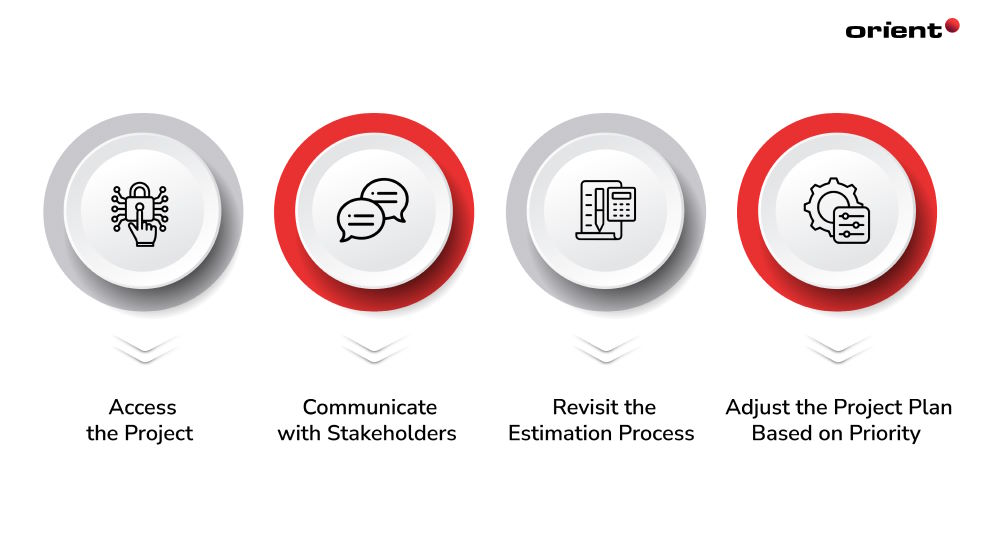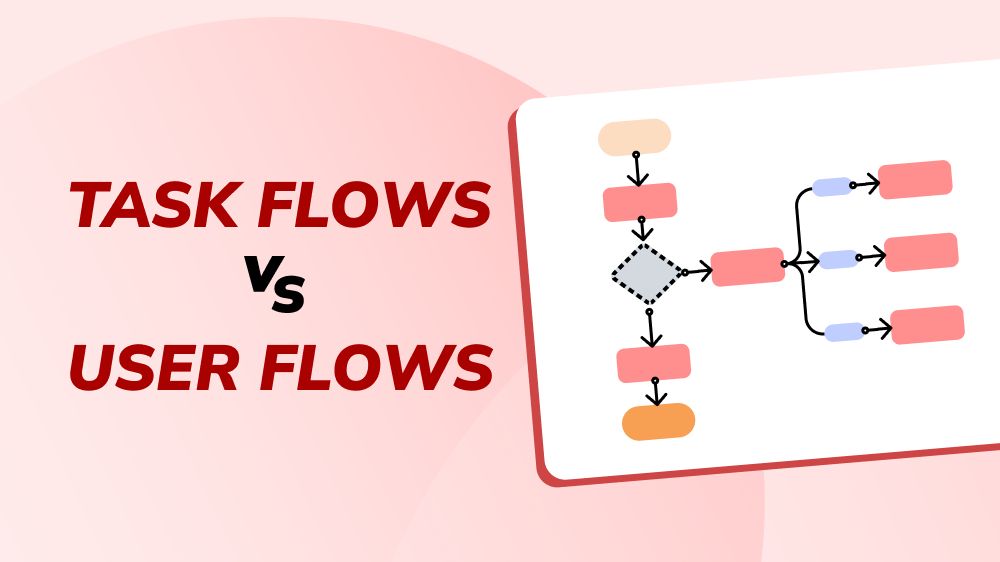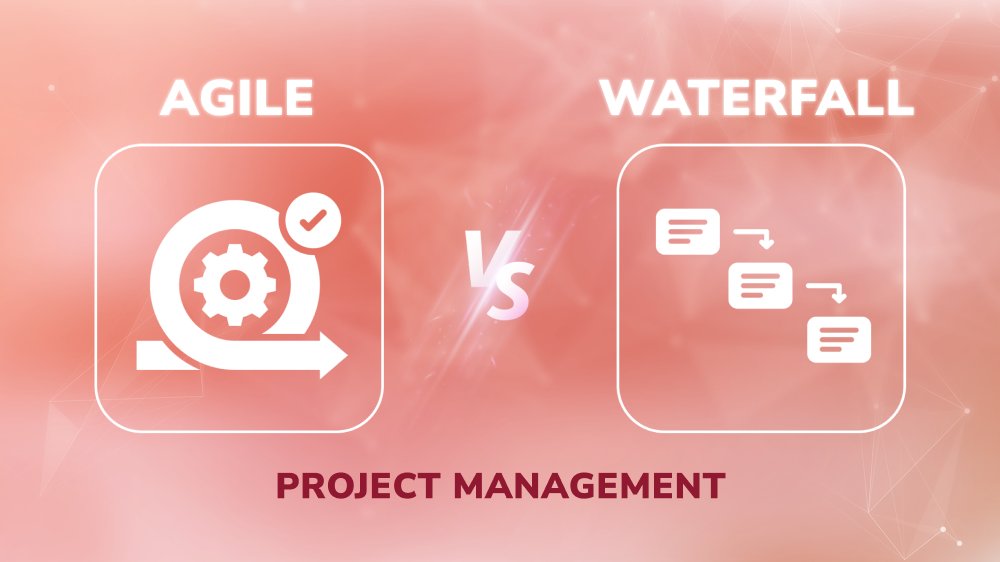Why Does Your Software Project Estimation Fail? Tricks for Accurate Predictions

Content Map
More chaptersA study by the Standish Group shows most US IT projects exceed budget and time constraints by 71%. Despite being carefully planned in the initial phases, many projects still cannot avoid running out of budget and time during the deployment process. This can be attributed to a myriad of factors that may arise throughout the software development life cycle, which the business may not have foreseen.
While lack of project management and skilled resources are the main reasons for project failures, inaccurate software project estimation is indeed the leading cause leading to disruptions in the seamless development of a given product.
It’s good news that estimates are hard to be accurate. It is completely understandable that software projects deviate from the estimate. However, the degree of error makes all the difference. There are instances where estimations can be reasonably accurate or at least within an acceptable range. By using tips and software estimation tools, it is possible for businesses to achieve reasonable estimates for project success.
What Is Software Project Estimation?

Software project estimations refer to the process of predicting all factors, including time, effort, resources, and costs required to complete a software development project. Such processes often involve analyzing project requirements, breaking down them into tasks, and estimating the effort needed for each task. The more accurate the estimate is, the more likely businesses can provide stakeholders with a realistic understanding of project completion time.
Instead of being a one-time activity, the software project estimation process is an ongoing process that requires to be revised and refined as the project progresses and new information becomes available. There are some common methods and estimation techniques used for software project estimation, namely:
- Expert Judgment: The final estimate is made by domain professionals based on their knowledge and expertise.
- Analogous Estimation (Top-down Estimation): Businesses use historical data from similar past projects as a reference to estimate the current project.
- Parametric Estimation: This method uses various project parameters such as lines of code, function points, or other measurable metrics to calculate estimates.
- Three-point Estimation: Using three values, including optimistic (best-case scenario), pessimistic (worst-case scenario), and most likely to provide a more accurate estimate.
- Bottom-Up Estimation: This approach involves breaking down the new project into small tasks and estimating the effort and duration for each task individually.
Why Is Software Development Estimation Important?
Stakeholders, such as clients and end users, need the overall project estimate for planning their own activities and aligning their business strategies accordingly. Investors require software project estimation to access the potential ROI software (Return on Investment of software). For businesses, accurate estimates are necessary for enhancing project delivery and overall project success. Despite the positions, software estimates have proven to be beneficial to humans in various ways.
Here are some reasons why software project estimation is important:
- Planning and Scheduling Effort: By conducting the time and estimation required for each task, project managers can establish a well-organized timeline that maximizes the efficiency of the development process at every stage.
- Resource Allocation: Estimation techniques help businesses allocate resources, including the number of team members, their skills, and the duration of each task more appropriately, enhancing productivity.
- Budgeting and Cost Control: Project estimation data is a valuable source of information in allocating funds appropriately, avoiding cost overruns, and ensuring that projects remain within budget constraints.
- Risk Management: As a way to give your next software development project an overview before actually getting involved in the development process, estimation is an effective method to help foresee potential risks and create plans for preventing them from adversely affecting project quality.
- Collaboration: Software project estimation creates a shared understanding of the project scope and requirements among members of development teams, ensuring everyone is on the same page for the overall project success.
Why Do the Estimations for Your Software Development Projects Keep Going Wrong?
Project estimation is hard to be absolutely accurate. However, if almost all of your predictions of project planning are quite far off track, it is time to reestimate the whole process. Below are some typical causes contributing to a wrong software project estimation that you need to avoid.
Poorly Scoped Projects
In software engineering, project scope is a concept that defines a project’s boundaries, deliverables, and objectives. More than anyone else, the project manager is the person most clearly able to lay out such requirements. However, if this is not the case, poor scope can lead to misunderstandings or ambiguity. These wrong project assumptions can ultimately result in accurate estimates as they fail to account for potential risks, limitations, and uncertainties.
The situation in which the scope keeps expanding without proper management due to changing requirements can also significantly impact the estimated timeline and resource allocation.
Over-optimism or Excessive Pressure
It is impossible to predict what the future holds. Instead of facing the inherently imperfect reality that potential risks can arise at any time, many businesses simply rely on the best-case scenarios to conduct software project estimation. Besides a failure to consider challenges and uncertainties in the estimation process, over-optimism can also lead to underestimating the effort required for each task, creating an unnecessarily relaxed and carefree mentality for developers involved in the production process.
Furthermore, estimates may be impacted by external pressure to meet aggressive timelines, leading to accelerated estimates and subsequent project delays.
Incomplete or Unreliable Estimation Techniques
There is no one-size-fits-all approach for your software development project, as each product type has different natural characteristics for each development stage, product type, and feature. For example, the process of creating a user-friendly interface on a banking app will consume less UI/UX designers’ time than the same task for an e-commerce platform for startups, as it requires many interactive elements. Assuming that every task takes the same amount of time is the shortest path to inaccurate estimation.
Besides, the use of flawed or outdated estimation techniques is also the reason why your predictions about the project’s budget and time estimates are constantly erroneous. Since such techniques may not provide a comprehensive scope definition, they easily fail to capture the true complexities and dynamics of modern software projects.
Inadequate Communication and Collaboration
It is no longer a strange statement to say that communication is key. Effective communication is especially important in initial estimates - the preliminary calculations made at the beginning of a project by the team and stakeholders. When there is poor communication and collaboration, there may be misunderstandings regarding project requirements. Factors that should have been included in estimation plans were carelessly ignored, negatively affecting the achievement of the project’s overall goals.
What to Do When Estimating Software Projects Fails?

Rushing the code out is not a proper way to rescue the inaccurate software project estimation situation. When estimating fails, it is crucial to take proactive steps to address the situation and mitigate the risks as below.
- Access the Project: Overall assessment of the general situation of the project at present to find out the reason for the estimation failure. This process typically includes steps such as reviewing the requirements, project scope, resource allocation, and any other factors that can potentially contribute to inaccurate estimates.
- Communicate with Stakeholders: Contact and notify stakeholders involved in the project about unwanted changes in product estimation. The two parties then discuss and come up with potential solutions collaboratively.
- Revisit the Estimation Process: Businesses seek the help of experienced software professionals for a better estimation process. Using appropriate estimation techniques and tools, they measure the software project one more time to redefine objectives, reallocate resources, and update timelines.
- Adjust the Project Plan Based on Priority: Gradually narrow the scope and arrange tasks throughout the software development life cycle in order of priority based on their criticality and impact. This allows businesses to focus efforts on only essential features while accommodating estimation adjustments. Developing an MVP (Minimum Viable Product) may help in this stage.
How to Improve the Estimation Accuracy?
Obviously, the estimation accuracy can never be 100% guaranteed. However, with the right approaches, project planning and delivery can be significantly improved.
Take Advantage of Historical Data
Data related to similar projects in the past may leave you a valuable asset in contributing to estimation accuracy. As a reference point, businesses can easily analyze the time, effort, and resources allocated for a better estimate of future projects.
Typically, past projects have comprehensive analysis sections in which benchmarks for different types of software development tasks are specifically recorded for use in extracting valuable insights. By accessing historical data, businesses determine the average time required to develop specific features, fix bugs, or perform testing, set realistic expectations, and improve accuracy in estimating similar tasks. This is also an effective tip to learn from past mistakes, identify common pitfalls, and promptly provide solutions.
Utilize Estimating Techniques
Estimation techniques such as top-down estimation and expert judgment were born to serve the need to improve software project estimation. Despite the technique types, they all have been developed and refined over time based on historical data and industry best practices. Their effectiveness in increasing the accuracy of project estimation has been verified and proven by the investigations of many large and small businesses.
With the help of estimation techniques, businesses increase accuracy, manage risk better, strengthen decision-making processes, and enable continuous improvements. However, it is important to note that they only truly maximize their potential when used properly. Businesses should apply techniques in conjunction with other project management practices to ensure successful project outcomes.
Break Tasks into Reachable Milestones
The software development process is indeed a challenging journey that requires multiple steps. Because of its high complexity, software project estimation is also very difficult to achieve completely accurately. Instead of leaving the large tasks, which can be overwhelming and difficult to estimate accurately, it is recommended to break tasks into reachable milestones for convenience in managing development progress and making necessary adjustments along the way.
When tasks are divided into milestones, resources are allocated effectively, cyber security risks are detected early, and effective communication with stakeholders increases. Breaking tasks into milestones also specifically aligns well with Agile methodologies such as Scrum or Kanban, helping businesses improve the overall performance of software products.
Be Strict to Your Estimations
While the advice of industry experts is of great significance to the software project estimation process, not all suggestions from stakeholders are informative. You need to know how to select data and consider them based on many factors to apply to the success of the project since no one is born to be a master estimator.
For instance, as a developer with experience in building auction websites, you estimate a specific task will be completed within a month. However, under the influence of stakeholders, you shorten the time to complete the task to two weeks. This negatively affects the product quality and provides wrong estimation when the task is done in haste. So, use your time wisely and consider the feasibility of any advice before acting.
Use Expert Input
Advice from experts in the field is a great way to strengthen the software project estimation process. With specialized knowledge and experience in specific domains or technologies related to the project, experts can give businesses valuable insights and guidance on estimating efforts. Some examples of domain experts who can give businesses advice include industry professionals, consultants, researchers, outsourcing vendors, and people from trade associations.
In addition, large volumes of data coming from Internet sources such as case studies also contribute to consolidating knowledge about interesting implemented modules and project estimation for businesses. Accessing specialized forums and groups dedicated to sharing practical experiences in all aspects of the development process is also a way to receive valuable advice.
You never know how it is unless you start doing it. If you need help from an industry expert, consider Orient Software as your trusted partner. For nearly two decades of experience, we have made great efforts in making the success of many projects from all fields, such as health, finance, education, etc. Give us a call for more details of our services.







